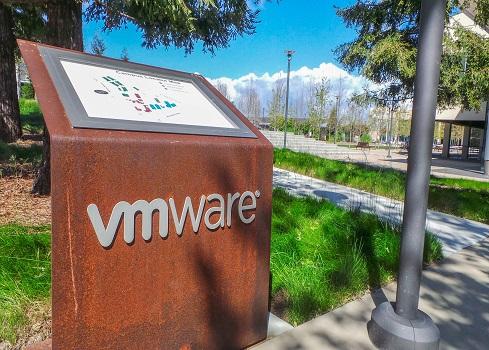VMware, Pivotal Offer Stack For Next-Gen Applications
The Pivotal Cloud Foundry development stack has been integrated with the VMware Photon Platform so that the two can produce and host micro-service applications.


9 Cloud Services To Keep You Productive At Interop
9 Cloud Services To Keep You Productive At Interop (Click image for larger view and slideshow.)
Pivotal and VMware have teamed up to offer what they describe as a next-generation application platform for both development and operations. It's not exactly a new product. It's VMware's existing Photon Platform with the Pivotal Cloud Foundry development environment layered on top, or a "cloud-native" software stack.
"Cloud-native stack" is as close as the two software firms, part of the EMC federation of companies, got to giving their combined software a name. The Photon Platform includes Photon OS, a miniaturized, 25MB Linux version to run a Docker or other Linux container, and the Photon Controller, a control plane over hundreds or thousands of containers, managing access to them and communications between them.
When combined with Cloud Foundry, the Photon Platform "is an end-to-end application management platform. It's access management, identity management, and a micro-services platform, like Netflix Open Source Software," said James Watters, vice president and general manager of Pivotal's Cloud Platform Group, in an interview. Netflix OSS is the Netflix set of open source tools that govern its operations on Amazon Web Services.
Another analogy is that the cloud-native stack gives the enterprise a chance to build and deploy containers without losing the ability to track and control them, similar to the way Google manages its large-scale environment, he added.
[Want to see how VMware made friends with containers? Read VMware Goes All-In on Containers.]
On its container-management side, the VMware/Pivotal stack also resembles the Mesosphere Data Center Operating System, a container orchestration and management environment, which Mesosphere made open source code on April 19. Mesosphere won backing from HP, Microsoft, Cisco, and 57 other companies with that move.
One thing that makes the VMware/Pivotal move appear to be trailing other industry events is that the cloud-native stack is not yet generally available. It's available for trial use, and will be made generally available later this quarter, a VMware spokesman said in follow-up interview. VMware released the Photon Controller as open source code Nov. 16 in an announcement at its VMworld event in Barcelona.
"From an operations model, the value proposition is simplicity," said Kit Colbert, vice president and CTO of VMware Cloud Native Applications, in an interview. "If you're serious about building a private cloud, and most customers are, the cloud-native stack works for you out of the box," he said.
The release of the stack also gives VMware customers a way to integrate containers into its vSphere data center environment, which runs primarily ESX Server virtual machines. The Photon Platform puts a wrapper, using the embedded version of the hypervisor, around a container, without introducing so much overhead that it starts to act like a bulky virtual machine, according to Colbert. The wrapped container can launch in 200 milliseconds, while virtual machines with a full operating system take much longer, he said.

Learn to integrate the cloud into legacy systems and new initiatives. Attend the Cloud Connect Track at Interop Las Vegas, May 2-6. Register now!
VSphere management software can then see and manage Photon-based containers like any other virtual machine, giving VMware customers a way to integrate hundreds or thousands of containers into their operations.
Managing containers as part of the virtualized environment is not new for VMware, but including the Cloud Foundry environment as a close fit means it's trying to address the developer side of the IT staff, as well as operations.
The Cloud Foundry side of the stack includes a wide variety of open source development tools and code-handling processes that speed development and allow frequent builds for testing and quality assurance.
Next-generation applications that are composed of micro-services distributed across a container cluster are believed to be the next direction for the enterprise data center. "Knowing where to place containers for various purposes on the cluster, that's what the Pivotal/Cloud Foundry stack is taking care of," Watters added.
The cloud-native stack puts VMware in a stronger position to provide the management intelligence for the emerging, container-based private cloud. If the stack catches on, VMware may someday be able to match its current strength in managing virtualized, legacy systems with a new position in private cloud operations.
[Editor's note: This article's reference to Photon OS corrects an earlier version's naming.]

About the Author(s)
You May Also Like
How to Amplify DevOps with DevSecOps
May 22, 2024Generative AI: Use Cases and Risks in 2024
May 29, 2024Smart Service Management
June 4, 2024







